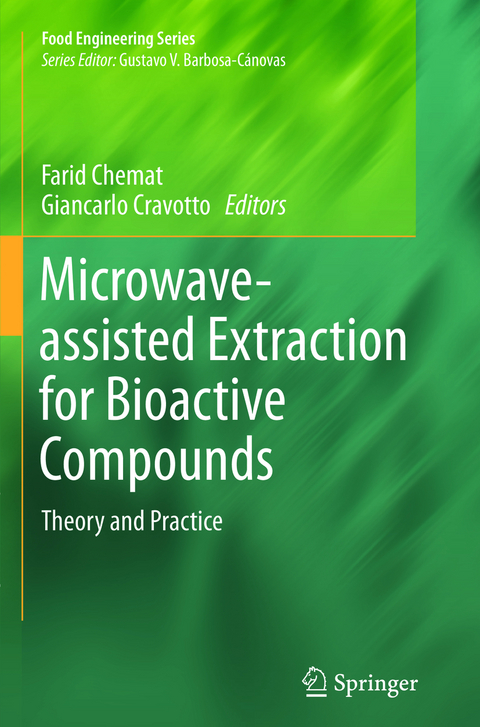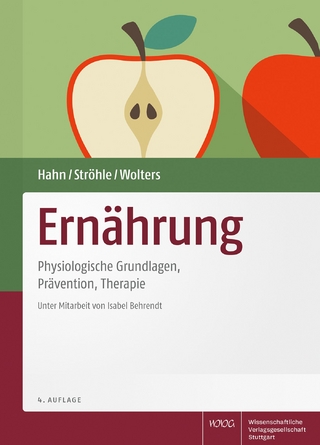
Microwave-assisted Extraction for Bioactive Compounds
Springer-Verlag New York Inc.
978-1-4899-7361-0 (ISBN)
Farid Chemat, Professor His main research interests are focused on innovative and sustainable extraction techniques (especially microwave, ultrasound and green solvents) for food, pharmaceutical and cosmetic applications. He is coordinator of a new group named “France Eco-Extraction” dealing with international dissemination of research and education on green extraction technologies. Université d’Avignon et des Pays du Vaucluse, INRA, UMR 408, F-84000 Avignon, France. Giancarlo Cravotto, Professor His research activity has been cantered on pharmacologically active natural products (isolation, structural elucidation, total synthesis and chemical modification). These studies have paved the road to new synthetic procedures and extraction techniques, particularly in the fields of ultrasound- and microwave-assisted protocols and flow-chemistry. Dipartimento di Scienza e Tecnologia del Farmaco, University of Turin, I-10125 Turin, Italy.
1. Microwave-assisted extraction - an introduction to dielectric heating.- 2. Fundamentals of microwave extraction.- 3. Microwave assisted extraction of essential oils and aromas.- 4. The Role of Microwaves in the Extraction of Fats and Oils.- 5. Microwave-Assisted Extraction of Antioxidants and Food Colors.- 6. The Role of Micowaves in Omics Disciplines.- 7. Pharmaceutical and nutraceutical compounds from natural matrices.- 8. From Laboratory to Industry: Scale-up, Quality and Safety Consideration for Microwave-Assisted Extraction.
| Erscheint lt. Verlag | 28.1.2015 |
|---|---|
| Reihe/Serie | Food Engineering Series |
| Zusatzinfo | XII, 240 p. |
| Verlagsort | New York |
| Sprache | englisch |
| Maße | 155 x 235 mm |
| Themenwelt | Medizin / Pharmazie ► Gesundheitsfachberufe ► Diätassistenz / Ernährungsberatung |
| Naturwissenschaften ► Biologie ► Biochemie | |
| Technik ► Lebensmitteltechnologie | |
| Technik ► Umwelttechnik / Biotechnologie | |
| ISBN-10 | 1-4899-7361-3 / 1489973613 |
| ISBN-13 | 978-1-4899-7361-0 / 9781489973610 |
| Zustand | Neuware |
| Haben Sie eine Frage zum Produkt? |
aus dem Bereich


